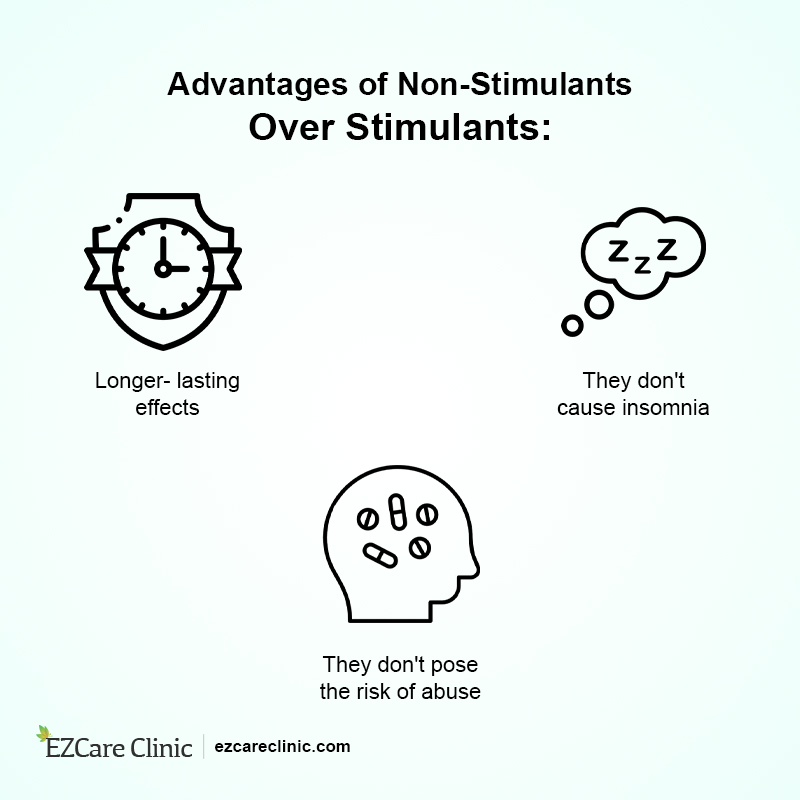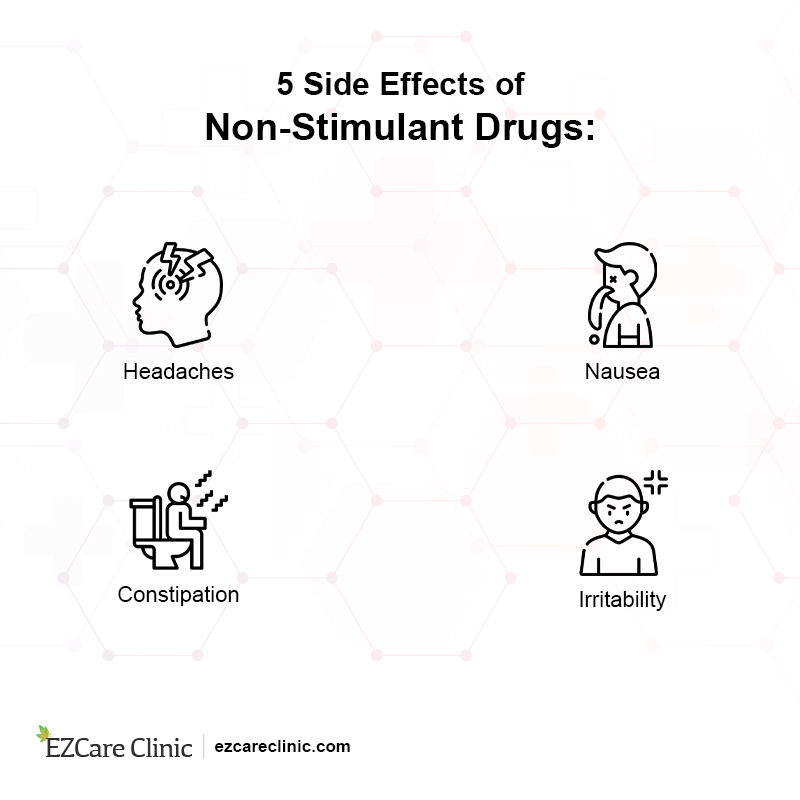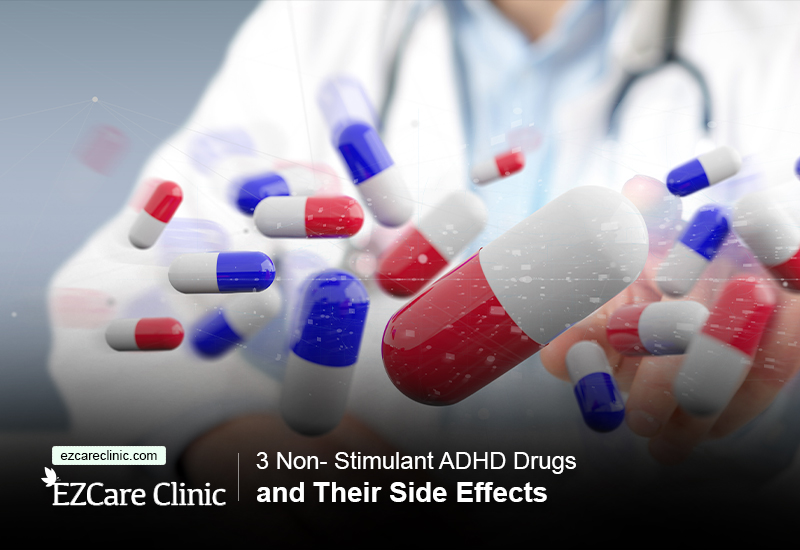Attention Deficit Hyperactivity Disorder (ADHD), as defined in the Fourth Edition of the Diagnostic and Statistical Manual of Mental Disorder, is a developmental disorder that sets in childhood and progresses through to adulthood. It is characterized by symptoms of inattentiveness and hyperactivity-impulsivity, which affect the behavior, attention, and learning of an individual.
If you also have any of these ADHD symptoms– Click below and let our ADHD expert help you.
The First-Line Treatment Options: Stimulant Drugs
Stimulants are usually the first-line options in the psychopharmacological treatment of ADHD. However, 10% to 30% of children and adults with ADHD do not respond to stimulants. Every individual has a unique body system, which affects how one responds to different treatment options. Therefore, while stimulant drugs are the typical choice for treating ADHD individuals with pre-existing health conditions may respond differently. In instances where one responds to the treatment, they will have to deal with troublesome side effects including headaches, cardiovascular ailments, sleep disturbances, loss of appetite, and liver hypersensitivity.
Alternative Treatment Options: Non-stimulant Drugs
Concerns about the effects of the long-term administration of stimulants prompted exploration into alternative treatment options with non-stimulant drugs. Unlike stimulants which work by increasing dopamine levels in the brain, non-stimulants affect neurotransmitters in the brain without increasing dopamine levels. As a result, it may take longer to see the effects of these drugs as compared to stimulants, which work within 45 to 60 minutes after administration. When it comes to the administration of non-stimulant drugs, they are preferred since they pose fewer challenges in addiction and the severity of the side effects.

Advantages of Non-Stimulants Over Stimulants
Medicines classified as non-stimulants encompass:
1. Atomoxetine
Atomoxetine (Strattera) is the most common non-stimulant drug used to treat ADHD in children who have been recorded as being unresponsive to stimulant drugs. Having been approved by the FDA; Strattera is classified as a selective norepinephrine reuptake inhibitor. Unlike stimulants that affect dopamine, Strattera boosts the levels of norepinephrine, a different chemical in the brain. It is available as a generic drug administered orally and has a longer onset of action since it takes several weeks to provide an optimal therapeutic effect. Once the maximum effect is reached, it may last for 24 hours a day and have carry-over effects the following day.
Side Effects
What are the side effects of atomoxetine? Atomoxetine comes with a warning that states suicidal thoughts as one of the side effects in the first few weeks of its usage. In this regard, it is recommended to take the drug on a daily basis to achieve its maximal therapeutic effect.
Click the button below to book a consultation with an ADHD expert and know all about the side effects of ADHD drugs.
Although rare, Jaundice is a major side effect you may notice in your child in the early stages of its use. Other mild side effects include:
- Reduced appetite
- Sleep disturbances
- Stomach upset
- Nausea
In case your child is using antidepressant drugs, it is advisable to keep the Atomoxetine dosage low.
2. Guanfacine XR
Guanfacine, an alpha-2 adrenergic receptor agonist, is a member of medications prescribed in the treatment of high blood pressure. It is available as a generic drug, and only its time-release version known as Intuniv is approved in the treatment of ADHD among children with sleep disturbances, aggression, and tic disorders.
Side Effects
What are the side effects of guanfacine? Unlike stimulant drugs that result in the significant loss of appetite in children, the effect is less severe with Guanfacine medicines. Other side effects include:
- Tiredness
- Irritability
- Mild headaches

5 Side Effects of Non- Stimulant Drugs
3. Tricyclic Antidepressants
Tricyclic antidepressants are among the earliest drugs developed to treat depression. These drugs target multiple neurotransmitters including norepinephrine, serotonin, and dopamine in the brain hence effective in the treatment of ADHD in patients with symptoms of depression and anxiety. The most common types of these drugs include Elavil (amitriptyline), Tofranil (imipramine), and Norpramin (desipramine).
Side effects
The side effects of tricyclic antidepressants range from mild to serious symptoms depending on the effect of each drug. Common side effects experienced with these drugs encompass:
- Insomnia
- Constipation
- Headaches
- Cardiovascular conditions
Should I Take Non-Stimulant Drugs?
As a parent or ADHD patient, the above guide only helps you gain knowledge about non-stimulant drugs as alternative options for treating ADHD. Even when armed with all the facts, deciding whether to take non-stimulant ADHD medication is not easy. It is important to get your doctor’s input when selecting the best treatment option. Pre-existing medical conditions and severe side effects are some of the major factors to consider when making the decision on non-stimulants. If the medication involves your child, it is important to get their input as to how they feel about the drugs administered to them. Remember that no medication can cure ADHD. Medicines relieve the symptoms when being taken and the symptoms can recur once the medication stops.
Get your ADHD symptoms treated by booking a consultation with our expert. Click below.
At EZCare Clinic, we provide diagnosis services and full-scale ADHD treatment solutions for all patients suffering from this disorder. Our expert doctors will help you in getting the best remedy for all ADHD symptoms affecting your daily life. We also provide free counseling and support services to parents to help them deal with ADHD children. Call EZCare Clinic on (415) 966-0848 and book an appointment and access professional services from our expert doctors.

